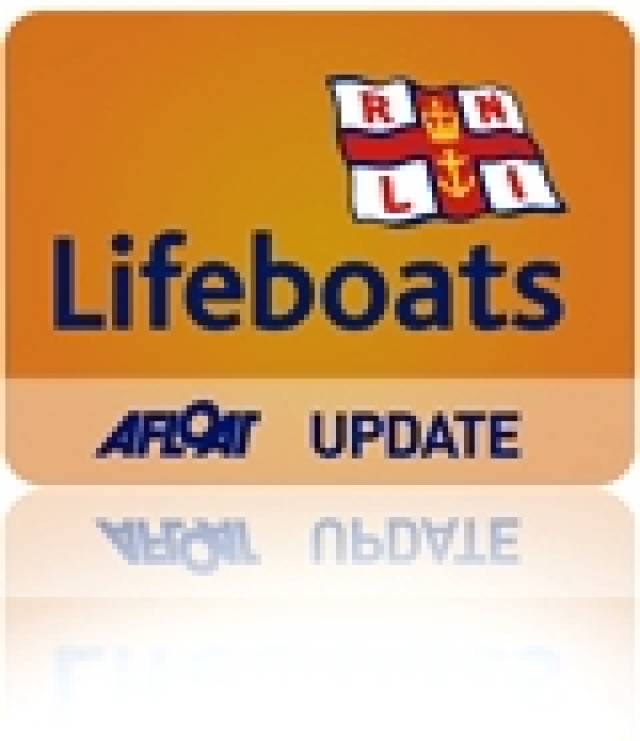At 17.54hrs the lifeboat, with helm Eleanor Hooker, Colin Knight and Ger Egan was launched. The lifeboat carried its salvage pump, and in addition, Lifeboat Operations Manager, Charles Stanley-Smith made contact with Fergal Kerney, Lifeboat Deputy Launching Authority, who agreed to take a second salvage pump to Portumna by road.
At 18.15hrs the lifeboat was alongside the casualty vessel which was listing to port and on rocks. There were two persons on board (the skipper has been joined by a friend, a marine mechanic). The lifeboat transferred an RNLI crew member and the salvage pump to the casualty vessel and the lifeboat salvage pump was immediately put to work. The cruiser Aftermath met Fergal Kerney and took him to the scene. At 18.21hrs the lifeboat transferred the second salvage pump to the casualty vessel, set up a tow and held off head to weather.
At 19.25, (it was now dusk) and with two pumps running, the vessel was not floated. At 19.34hrs, RNLI Lifeboat helm agreed one last attempt to float the vessel before taking all persons off. Eamon Egan, Marine Engineer, brought a third, larger pump to the vessel from Portumna. At 19:45hrs, when the boat was not floated with three pumps running, the lifeboat made the decision to take all persons off and advised Valentia Coast Guard of same. At 20.15hrs, the two persons from the casualty vessel were transferred onto Aftermath, who had offered to take them back to Portumna. The owner will attempt to refloat his vessel in daylight tomorrow. The lifeboat returned to station and was ready for service again at 21.10hrs.































































